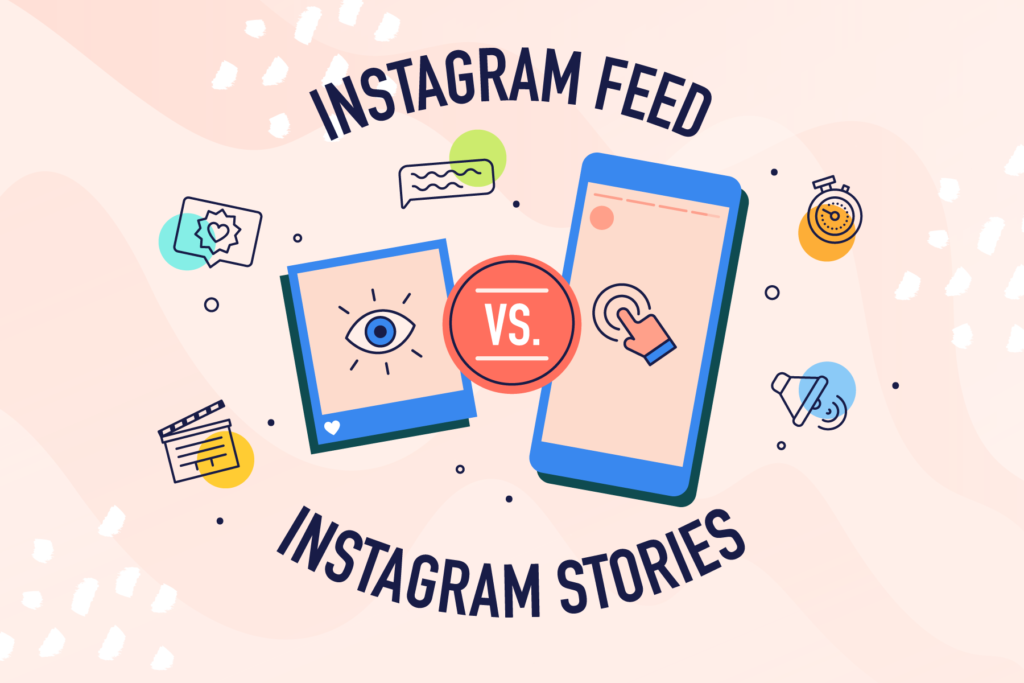Boosting 2 billion monthly active users, Instagram offers two primary ways to share contents: Stories and Feed Posts. While both features help brands connect with audiences, they serve distinct purposes in social media marketing. This article breaks down differences and insights between Instagram Story vs. Feed Post.

Differences Between Instagram Story vs. Feed Post
1. Content Time Difference
Stories: Disappear after 24 hours (unless saved to Highlights)
Feed Posts: Remain permanently visible on your profile
2. Content Requirements
Stories:
– Vertical format (9:16 aspect ratio)
– 15-second video clips or static images
– Interactive elements: Polls, quizzes, questions
– Link stickers (for accounts with 10k+ followers)
Feed Posts:
– Square (1:1) or landscape (16:9) formats
– Up to 60-minute videos
– Carousel posts with 10+ images
– Permanent hashtag and location tagging
3. Algorithm Difference
Stories: Appear in chronological order at top of feed
Feed Posts: Ranked by engagement using Instagram’s algorithm
4. Engagement Modes
– Stories generate 15-25% reply rate
– Feed Posts achieve 2-5% comment rate
– 34% of users discover new products through Feed
– 28% make purchases via Story links
When to Use Instagram Stories
Best For:
- Time-sensitive promotions (flash sales, events)
- Behind-the-scenes content
- Quick audience polls/surveys
- Ephemeral announcements

When to Use Feed Posts
Best For:
- Evergreen content
- Product showcases
- Brand storytelling
- SEO-optimized hashtag strategies
Tips from Social Media Experts
1. Cross-Promotion Strategy
“Use Stories to drive traffic to important Feed Posts,” recommends Molly Palmer, digital marketing strategist. “The swipe-up feature (for eligible accounts) can increase Feed engagement by 40%.”
2. Content Repurposing
Jack Antoniff suggests: “Turn high-performing Feed Posts into Story carousels. Our data shows this technique boosts reach by 25%.”
3. Analytics Tracking
Track key metrics separately:
– Stories: Completion rate, reply rate
– Feed: Save rate, share count

Understanding the difference between Instagram Story vs. Feed Post helps create balanced content strategies. Use Stories for real-time engagement and Feed Posts for lasting brand presence. For optimal results, combine both formats. Brands using both features see 68% higher engagement than those using just one.
Ready to optimize your Instagram strategy? Bookmark this guide and share it with your marketing team for reference.





